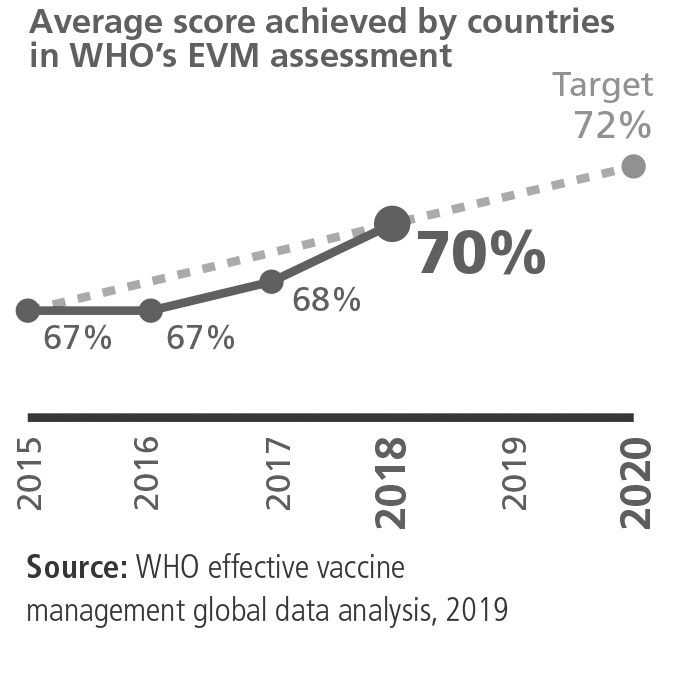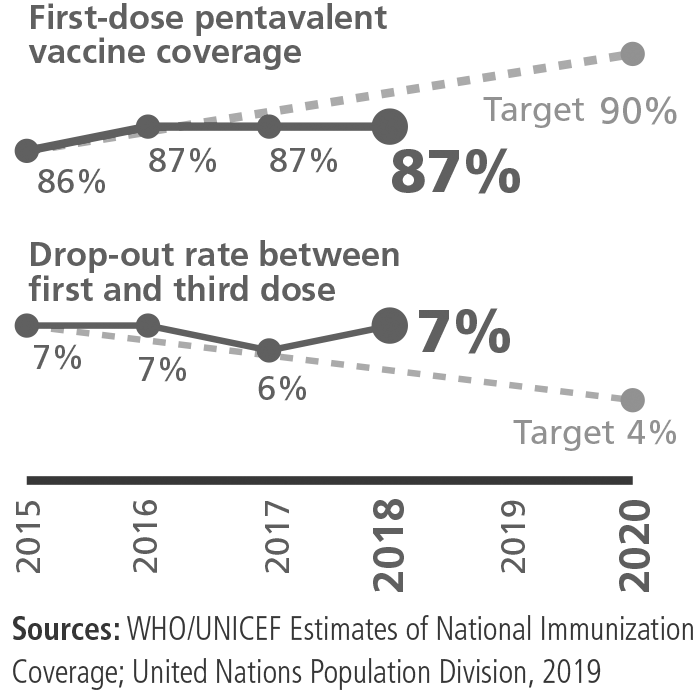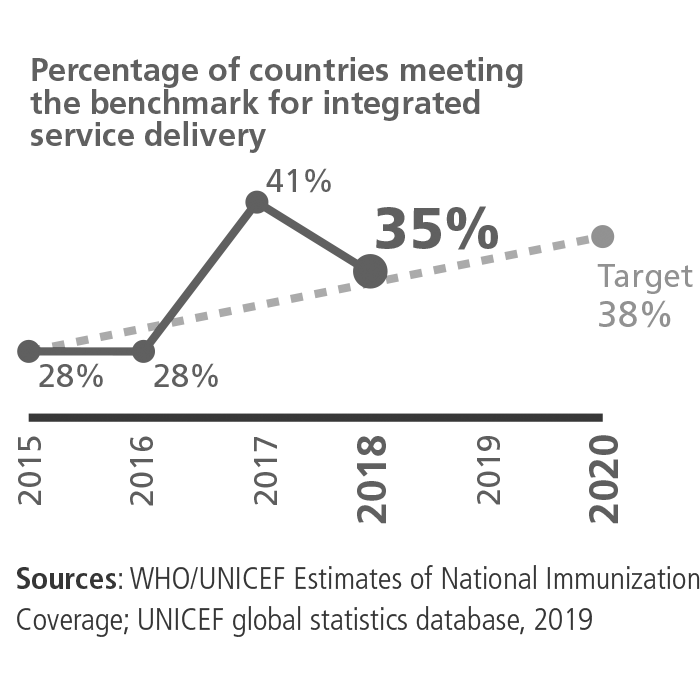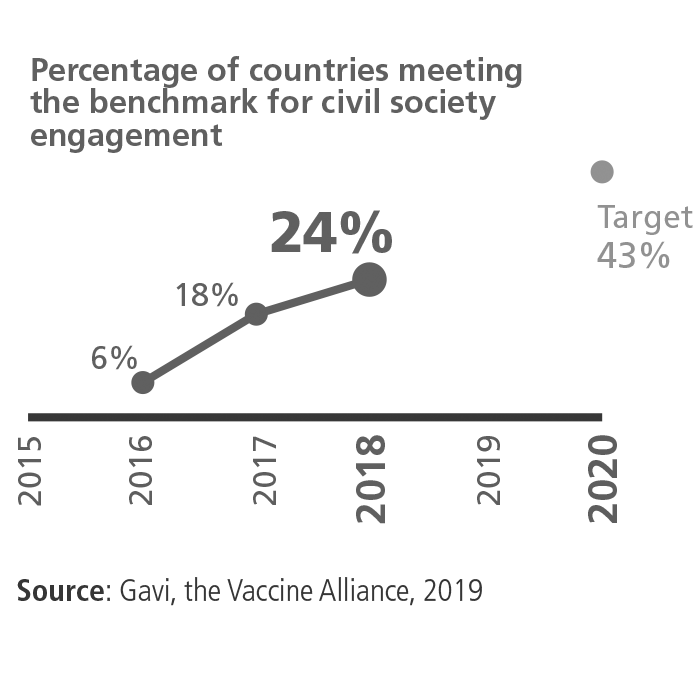Supply chain performance
What we measure: The average score achieved by Gavi-supported countries that have completed WHO’s effective vaccine management (EVM) assessment. This indicator helps countries to evaluate their immunisation supply chain performance over time against best practice standards, as well as to identify and respond to shortcomings. Among the features assessed are vaccine management, storage capacity, human resources and information systems.
Strong supply chains are essential for counties to ensure vaccines are available wherever and whenever they are needed, and that they are stored consistently at the temperatures required to remain potent and safe. Among the features assessed are vaccine management, storage capacity, human resources and information systems.







